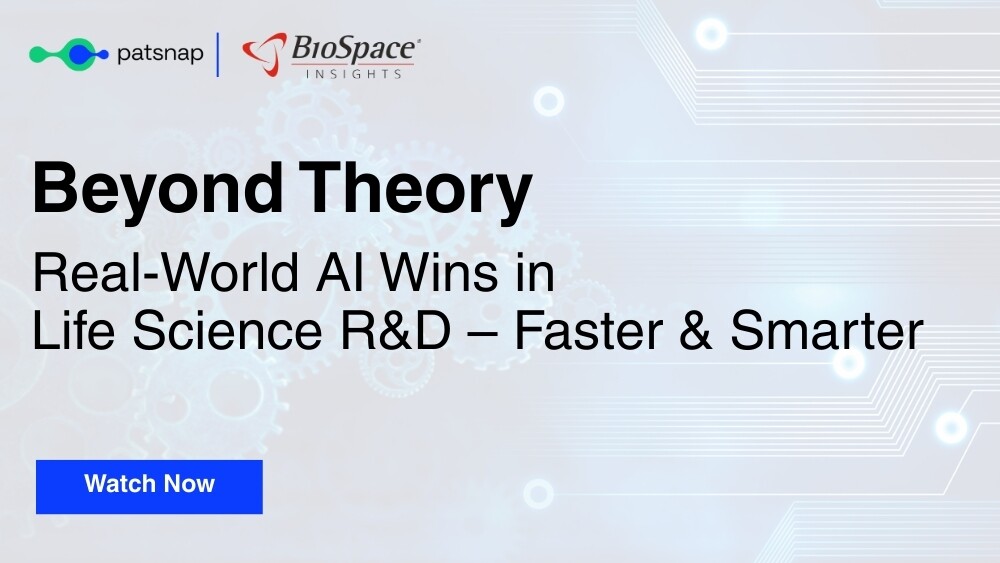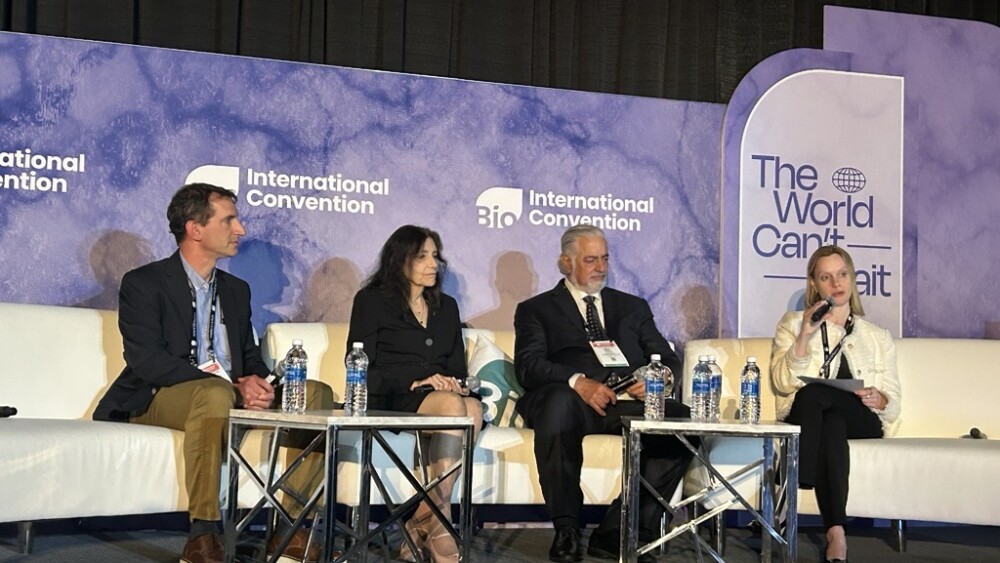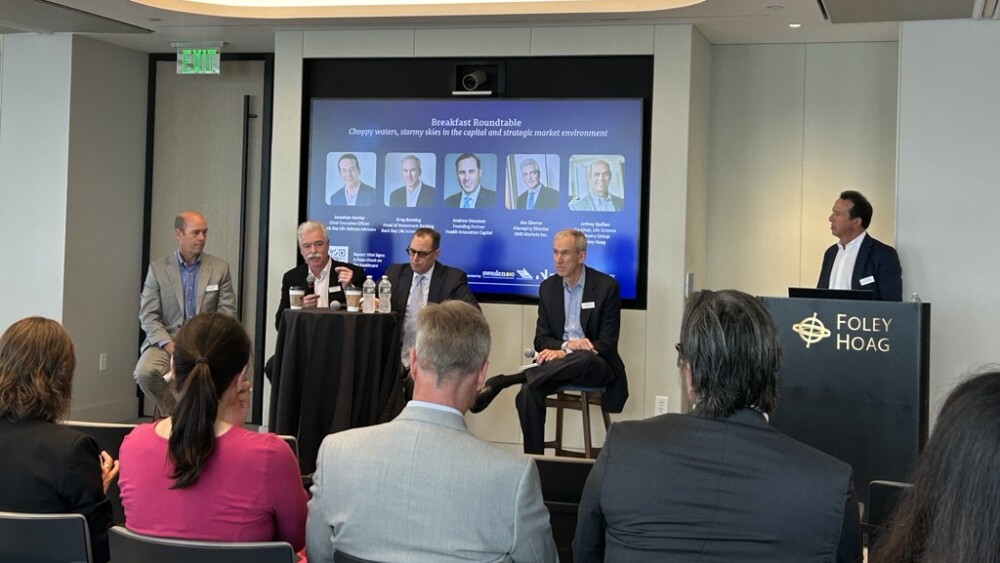CONYERS, GA--(Marketwire - March 30, 2011) -
| Highlighted Links |
GeckoSystems Intl. Corp. |
MacReport Media Publishing |
Attendees will be able to observe and discuss GeckoSystems' suite of proprietary technologies enabling cost effective and truly utilitarian mobile service robots as well as discuss their many market opportunities. The conference will be held at the Honey Creek Conference Center in Conyers, GA. It will be open to invited guests from 10A to 4P on Wednesday and Thursday, April 13 and 14. The conference center is located at 3565 Georgia Highway 20, Conyers, GA 30013. Lunch and other refreshments will be provided both days.
It is easy to register for attendance. Just send an email to info (at) GeckoSystems.com or call 678-413-9236. A confirmation email will be sent to verify the registration. On the days of the conference there will be an attendant at the front door to have guests show their confirmation email and fill out a brief registration form.
"We enjoy having these conferences because it gives us an opportunity to show the latest developments with our robots and meet interested stakeholders. We are particularly excited this year to show our completely revised robot using Microsoft's Kinect. This new development helps the robot move more gracefully with greater situational awareness," said GeckoSystems' President/CEO Martin Spencer.
During the two-day event, discussions and live demonstrations will be held featuring GeckoSavants such as:
- GeckoNav™: Proprietary automatic self-navigation software responsible for maneuvering, avoiding dynamic and/or static obstacles, seeking waypoints and patrolling.
- GeckoChat™: The verbal interaction and 'command and control' responsible for interaction with the care-receiver such as answering questions, assisting with daily routines and reminders.
- GeckoImager™: The utilization of Microsoft's Kinect depth camera
- Other demonstrations will include GeckoScheduler™, GeckoZap™, GeckoOrient™, GeckoSPIO™, and the GeckoMotorController™.
The live demonstrations will enable many industry observers and investors to witness the overall capabilities of the CareBot. Additionally, attendees will be better able to evaluate the probability of income streams from technology licensing and applicability in other markets besides the consumer, such as:
- Commercial security
- Public safety
- Professional healthcare
- Government systems
- Agriculture
- Education.
There will also be a presentation and discussion of GeckoSystems' Mobile Robot Safety Paradigm. This important topic was first reviewed early last December with a senior Japanese government and robot industry delegation.
"We consider it to be a moral and ethical imperative to be investigating and discussing the impact of potentially very dangerous machines operating automatically without direct human control in environments populated by people, pets, and other live animals," remarked Spencer. "Our tag line indicates clearly we place safety first in all our mobile service robot (MSR) solutions due to our many years of studying the impact of autonomous machines physically interacting with us, our families, and the general population of people and animals that inhabit our society and civilization."
MSR's can very dangerous due to their size, weight, locomotion system, level of autonomy, level of situational awareness, speed, power supply, etc. Hence the discussion of level of autonomy vis a' vis level of safety vis a' vis needed level of appropriate and sufficient regulations is very timely and necessary. Imagine, if you will, the damage an electric wheelchair, electric golf cart, etc. can inflict on humans, their pets and/or surroundings.
Some of the large walking robots in Japan weigh 200-300+ pounds. When powered off, -- whether deliberately, accidentally, or due to power depletion -- they fall down "rag doll" like due to no power to keep them standing. A 300-400 pound tele-operated MSR is actually more dangerous than a semi- or low-level autonomous MSR due to potentially poor, inattentive operator control. For example, a 250+ pound electric wheelchair can cause significant damage to persons, animals and its environment due to its weight, power, and speed. (This has given cause for GeckoSystems to be developing a "collision proof" upgrade kit for joystick controlled wheelchairs.)
Software attributes will be discussed ranging from simple obstacle avoidance to AI enabled self-navigation. Simple obstacle avoidance includes: Low Level, Reactive (LLR), Mid Level, Proactive (MLP) and High Level, Contemplative (HLC) behaviors. AI Self Guidance (AISG) Eg. errand running, patrolling, seeking, finding, following, pursuing, includes Loose Crowd Capable (LCC) and Wide Receiver Capable (WRC) behaviors. The level of situational awareness of an MSR also dramatically influences the level of safety that which a particular MSR is capable.
"We were pleased and honored to have met with senior Japanese government representatives early last December to discuss many areas of mutual interest. As far as I know there are no specific laws for utilization of personal robots in Japan at this time. Drs. Kato and Kotani and their sponsors, including NEDO, have started the research toward the new law. This is Agency under Ministry of Economy, Trade and Industry (METI), like JETRO. It seems METI has now realized that it is very important to prepare the specific Law(s) for the personal robots to be used widely in the aging society, and had NEDO to take up this project. NEDO assigned the project to a foundation called Manufacturing Science and Technology Center (MSTC). Dr. Kotani is sponsored by this organization," stated Mr. Hajime Yasumatsu, Chairman, Yasu, Inc.
"It was a very insightful summit last December with this Japanese delegation. During our upcoming conference, I am very much looking forward to presenting and discussing the many aspects of insuring that the coming incorporation of mobile service robots into our everyday lives, whether at home, play, or at work will be safe and successful. Our leadership role in mobile robot solutions is not limited to simply technology and business, but the most important aspect of all, safety. We believe that our nearly 1400 investors are concerned with safety so our products will be perceived by their users as safe, secure, and the service, cost effective, such that they will be readily purchased," said Spencer.
Service robots can be used to provide domestic aid for the elderly and disabled, serving various functions ranging from cleaning to entertainment to remote monitoring. The high cost of labor in developed countries and the increasing need for assisted living has led to the development of the service robotics market. As service robots are in greater proximity to humans, the technology involves more safety concerns over human-machine interaction. However, developments in the manufacture of intelligent and safer robots by GeckoSystems address the issues of safety, manipulation, and sensing. Thus, GeckoSystems is well prepared for the day when every home will have a robot.
"However, live demonstrations such as those at our upcoming conference, give our suite of enabling, proprietary technologies credence and value. We have several large markets before us due to our 'first mover' advantage in them," concluded Spencer.
Journalists, stockholders, prospective vendors, interested investors and business partners may submit their request for attendance to the "Mobile Robots in Motion" conference at info(at)GeckoSystems.com or call 678-413-9236.
About GeckoSystems International Corporation:
Since 1997, GeckoSystems has developed a comprehensive, coherent and sufficient suite of hardware and software inventions to enable a new type of home appliance (a personal companion robot) the CareBot™, to be created for the mass consumer marketplace. The suite of primary inventions includes: GeckoNav™, GeckoChat™ and GeckoTrak™.
The primary market for this product is the family for use in eldercare, care for the chronically ill and childcare. The primary distribution channel for this new home appliance is the thousands of independent personal computer retailers in the U.S. The manufacturing infrastructure for this new product category of mobile service robots is essentially the same as the personal computer industry. Several outside contract manufacturers have been identified and qualified their ability to produce up to 1,000 CareBots per month within four to six months.
By the end of this year, the Company plans to complete productization of its CareBot™ offering with the introduction of its fourth generation personal robot, the CareBot™ 4.0 MSR. The Company expects to be the first personal robot developer and manufacturer in the world to begin in-home eldercare evaluation trials.
The present senior management at GeckoSystems has more than 35 years experience in consumer electronics sales and marketing, and product development. Senior managers have been identified for the areas of manufacturing, marketing, sales, and finance.
About the CareBot™ MSR:
The CareBot™ has proven to be ideal for the Consumer Family care market (care for children and the elderly) which has been chronicled in articles from http://www.psychologytoday.com/blog/adventures-in-old-age/200906/the-robots-have-dawned-meet-the-carebot and http://cgmasi.com/eyeontechnology/2009/06/personal-robots-to-monitor-elderly-vital-signs.html. In this market, MSRs serve as a cost effective alternative to nursing assistance or assistance living residency. The estimated savings total can exceed tens of thousands of dollars.
The CareBot™ MSR enabling intelligent monitoring by automatically following the care receiver from room to room on site and enables the caregiver a visual and auditory presence to better watch over and assist their needs. It is capable of providing telepresence or conducting "Virtual Visits" allowing the parents to view their children, or adult children to monitor their frail parents from any location with Internet access. CareBots also serve as automatic reminders informing care receivers of appointments, visitors (invited and/or unexpected) and other events (i.e. taking medications, family anecdotes, favorite Bible verses, watching television programs).
Like an automobile, mobile robots are made from steel, aluminum, plastic, and electronics, but with ten to twenty times the amount of software running. The CareBot has an aluminum frame, plastic shroud, two independently driven wheels, multiple sensor systems, microprocessors and several onboard computers connected in a local area network (LAN). The microprocessors directly interact with the sensor systems and transmit data to the onboard computers. The onboard computers each run independent, highly specialized cooperative/subsumptive artificial intelligence (AI) software programs, GeckoSavants, which interact to complete tasks in a timely, intelligent and common sense manner. GeckoSuper, GeckoNav, GeckoChat, GeckoScheduler and GeckoTrak are primary, high level GeckoSavants. GeckoNav is responsible for maneuvering, avoiding dynamic and/or static obstacles, seeking waypoints and patrolling. GeckoChat is responsible for interaction with the care-receiver such as answering questions, assisting with daily routines and reminders, and responding to other verbal commands. GeckoTrak, which is mostly transparent to the user, enables the CareBot to maintain proximity to the care-receiver using sensor fusion. The CareBot is a new type of Internet appliance, a personal assistant robot that is accessible for remote video/audio monitoring and telepresence.
More detailed information explaining what the CareBot is seeing and thinking, while beneficial, would be misleading since machines do not "see and think." They read sensors and then compute responses. The "appearance" of seeing and thinking is an organic capability, not a machine's. So the mobile robot platform gathers distance data to objects in its environment, determines if they are obstacles, and then computes the necessary wheel speeds to successfully avoid that obstacle.
GeckoSystems has several breakthrough technologies -- not just the GeckoImager -- in concert with the Kinect, and all the other necessary mobile robot solutions, such as their GeckoSavants, to have a complete, cost effective and multifunctional product. Due to the robustness of GeckoSystems' biological hierarchal architecture, GeckoNav being "sensor loving," and the recent invention of GeckoImager, the company has strengthened its "first mover" position in this emerging trillion-dollar industry.
Market Research:
At the time of founding, nearly 14 years ago, GeckoSystems did extensive primary market research to determine the demographic profile of the early adopters of the then proposed product line. Subsequent to, and based on that original market research, they have assembled numerous focus groups to evaluate the fit of the CareBot™ personal robot into the participant's lives and their expected usage. The Company has also frequently employed the Delphi market research methodology by contacting and interviewing senior executives, practitioners and researchers knowledgeable in the area of elder care. Using this factual basis of internally performed primary and secondary market research, and third-party research is the statistical substance for the Company's sales forecasts.
Not surprisingly, the scientific statistical analysis applied revealed that elderly over 65 living alone in metropolitan areas with broadband Internet available and sufficient household incomes to support the increased costs were identified as those most likely to adopt initially. Due to the high cost of assisted living, nursing homes, etc. the payback for a CareBot™ is expected to be only seven to nine months while keeping elderly care receivers independent, in their own long time homes, and living longer due to the comfort and safety of more frequent attention from their loved ones.
The Projected Consumer Market Size In Dollars For Cost Effective, Utilitarian, Multitasking Eldercare Personal Robots:
-----------------------------
Year Market Size
-----------------------------
2012 $74.0 billion
-----------------------------
2013 $77.0 billion
-----------------------------
2014 $80.0 billion
-----------------------------
2015 $83.3 billion
-----------------------------
2016 $86.6 billion
-----------------------------
Estimated Market Penetrations and Projected Sales:
----------------------------------------
Year Percentage Projected Sales
----------------------------------------
2012 0.06% $22 million
----------------------------------------
2013 0.03% $44 million
----------------------------------------
2014 0.22% $176 million
----------------------------------------
2015 0.53% $440.2 million
----------------------------------------
2016 0.81% $704.3 million
----------------------------------------
Source: U.S. Census Bureau; GeckoSystems Intl. Corp.
The Company expects these sales despite -- and perhaps because of -- the past recession due to pent up demand for significant cost reduction in eldercare expenses. The foregoing forecasts do not include sales in non-metropolitan areas; elderly couples over 65 (only elderly living alone are in these forecasts); those chronically ill -- regardless of age -- or elderly living with their adult children.
The Company's "mobile robot solutions for safety, security and service™" are appropriate not only for the consumer, but also professional healthcare, commercial security and defense markets. Professional healthcare require cost effective, timely errand running, portable telemedicine, etc. Homeland Security requires cost effective mobile robots to patrol and monitor public venues for weapons and WMD detection. Military users desire the elimination of the "man in the loop" to enable unmanned ground and air vehicles to not require constant human control and/or intervention.
What Does a CareBot™ Do for the Care Giver?
The short answer is that it decreases the difficulty and stress for the caregiver that needs to watch over Grandma, Mom, or other family members most, if not much, of the time day in and day out due to concerns about their well being, safety, and security.
But, first let's look at some other labor saving, automatic home appliances most of us use routinely. For example, needing to do two or more necessary chores and/or activities at the same time, like laundering clothes and preparing supper.
The automatic washing machine needs no human intervention after the dirty clothes are placed in the washer, the laundry powder poured in, and the desired wash cycle set. Then, this labor saving appliance runs automatically until the washed clothes are ready to be placed in another labor saving home appliance, the automatic clothes dryer. While the clothes are being washed and/or dried, the caregiver prepares supper using several time saving home appliances like the microwave oven, "crock" pot, blender, and conventional stove, with possible convection oven capabilities.
After supper, the dirty pots, pans, and dishes are placed in the automatic dishwasher to be washed and dried while the family retires to the den to watch TV, and/or the kids to do homework. Later, perhaps after the kids have gone to bed, the caregiver may then have the time to fold, sort, and put up the now freshly laundered clothes.
So what does a CareBot™ do for the caregiver? It is a new type of labor saving, time management automatic home appliance. For example, the caregiver frequently feels time stress when they need to go shopping for 2 or 3 hours, and are uncomfortable when they have to be away for more than an hour or so. Time stress is much worse for the caregiver with a frail elderly parent that must be reminded to take medications at certain times of the day. How can the caregiver be away for 3-4 hours when Grandma must take her prescribed medication every 2 or 3 hours? If the caregiver is trapped in traffic for an hour or two beyond the 2 or 3 they expected to be gone, this "time stress" can be very difficult for the caregiver to moderate.
Not infrequently, the primary caregiver has a 24 hour, 7 days a week responsibility. After weeks and weeks of this sometimes tedious, if not onerous routine, how does the caregiver get a "day off?" To bring in an outsider is expensive (easily $75-125 per day for just 8 hours) and there is the concern that medication will be missed or the care receiver have an accident requiring immediate assistance by the caregiver, or someone they must designate. And the care receiver may be very resistant to a "stranger" coming in to her home and "running things."
So what is it worth for a care receiver to have an automatic system to help take care of Grandma? Just 3 or 4 days a month "off" on a daylong shopping trip, a visit with friends, or just take in a movie would cost $225-500 per month. And that scenario assumes that Grandma is willing to be taken care of by a "stranger" during those needed and appropriate days off.
So perhaps, an automatic caregiver, a CareBot™, might be pretty handy, and potentially very cost effective from the primary caregiver's perspective.
What Does a CareBot™ Do for the Care Receiver?
It's a new kind of companion that always stays close to them enabling family and friends to care for them from afar. It tells them jokes, retells family anecdotes, reminds them to take medication, reminds them that family is coming over soon (or not at all), recites Bible verses, plays favorite songs and/or other music. It alerts them when unexpected visitors, or intruders are present. It notifies designated caregivers when a potentially harmful event has occurred, such as a fall, fire in the home, or simply been not found by the CareBot™ for too long. It responds to calls for help and notifies those that the caregiver determined should be immediately notified when any predetermined adverse event occurs.
The family can customize the personality of the CareBot™. The voice's cadence can be fast or slow. The intonation can be breathy, or abrupt. The voice's volume can range from very loud to very soft. The response phrases from the CareBot™ for recognized words and phrases can be colloquial and/or unique to the family's own heritage. The personality can range from brassy to timid depending on how the caregiver, and others appropriate, chooses it to be.
Generally, the care receiver is pleased at the prospect of family being able to drop in for a "virtual visit" using the onboard webcam and video monitor for at home "video conferencing." The care receiver may feel much more needed and appreciated when their far flung family and friends can "look in" on them anywhere in the world where they can get broadband internet access and simply chat for a bit.
Why is Grandma really interested in a CareBot™? She wants to stay in her home, or her family's home, as long as she possibly can. What's that worth? Priceless. Or, an average nursing home is $5,000 per month for an environment that is too often the beginning of a spiral downward in the care receiver's health. That's probably $2-3K more per month for them to be placed where they really don't want to be.
- Financial payback on a CareBot™? Less than a year.
- Emotional payback for the family to have this new automatic caregiver? Nearly instantaneous
Safe Harbor:
Statements regarding financial matters in this press release other than historical facts are "forward-looking statements" within the meaning of Section 27A of the Securities Act of 1933, Section 21E of the Securities Exchange Act of 1934, and as that term is defined in the Private Securities Litigation Reform Act of 1995. The Company intends that such statements about the Company's future expectations, including future revenues and earnings, technology efficacy and all other forward-looking statements be subject to the Safe Harbors created thereby. The Company is a development stage firm that continues to be dependent upon outside capital to sustain its existence. Since these statements (future operational results and sales) involve risks and uncertainties and are subject to change at any time, the Company's actual results may differ materially from expected results.
Facebook:
http://www.facebook.com/group.php?gid=140182685996116&v=wall
YouTube:
Kinect Enabled Personal Robot video:
http://www.youtube.com/watch?v=kn93BS44Das
In this video one will observe static and dynamic obstacle avoidance into and back out of a cluttered and narrow "gauntlet alley." One may determine that the movements are smoother than what most people could do using a joystick, human controlled mobile platform. One will witness three low levels of obstacle avoidance: reactive, proactive, and contemplative. No prior mapping or path planning was performed before or during the demonstration run. GeckoNav, the AI savant doing the guiding, controls all mobile activities during this demo. You will witness subsumptive AI behaviors occurring as obstacle avoidance subsumes way point seek and vice versa with an emergent behavior expressed as errand running down a cluttered hallway and back without any human intervention.
CareBot demo videos from Rockdale Magnet FIRST Robotics Team's visit
http://www.youtube.com/watch?v=1FW8rmV2hDE
http://www.youtube.com/watch?v=hemWWCEzXBc
http://www.youtube.com/watch?v=cchwtwLd33E
http://www.youtube.com/watch?v=bmmxzdaAiGE
Elder Care Robot Trial Video 2, Stationary View
http://www.youtube.com/watch?v=smUNls4LJtY&feature=player_embedded#at=16
One CareBot™ One Family
http://www.youtube.com/watch?v=xxK46chfP6A&feature=mfu_in_order&list=UL
Mobile Robot Navigates Dining Room & Kitchen
http://www.youtube.com/watch?v=S_jd9_0W9mE&feature=mfu_in_order&list=UL
Telephone:
Main number: 1-866-CAREBOT (227-3268)
International: +1 678-413-9236
Fax: +1 678-413-9247




